Last Updated on March 8, 2023
Whether you have a weak stomach or you’re taking care of someone who does, at some point, you’re likely going to have to deal with vomit in your shower drain. And, If you have ever had the unfortunate experience of doing it, you know that it can be a real challenge.
Many people don’t realize how important it is to clean their shower drain until they are faced with the struggle of cleaning up vomit. Besides preventing disease spread, it can also be difficult to remove vomit if it hardens in a drain.
So, our point of discussion today is centered around the process of how to clean vomit out of the shower drain. We will go into minute details of the process so that you will be able to successfully do it on your own.
Prerequisite Materials:

- Rubber gloves
- Mask
- Plunger
- Baking soda
- White vinegar
- A bucket
- A plumber’s snake
- Bleach
- Hot water
How to Clean Vomit Out of Shower Drain: Detailed Steps
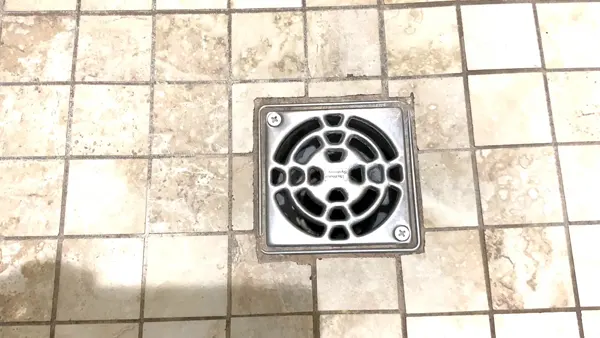
These are some of the easy steps you can follow to clean up the mess and return your shower drain to its former glory.
1. Use Protection:
Put on rubber gloves and clear away any solid matter that is blocking the drain. If you can, do this without getting too close to the vomit itself. Be sure to dispose of the materials you use in a plastic bag so that you can seal them shut and prevent the spread of any bacteria.
2. Use Paper Towel/Rag:
When you need to clean vomit out of the shower drain, one of the most important things you need to do is to remove as much of it as you can using a toilet paper roll or rag.
If the vomit is dry, you may be able to just brush it away with your hands. In any case, if it is wet, you’ll need to use a paper towel or rag to soak up as much vomit as possible.

3. Flush with Hot Water:
Flushing the drain with hot water is an important step in cleaning vomit out of the shower drain. The hot water will help break down any dried vomit and make it easier to remove.
Be sure to flush the drain for several minutes to ensure that all of the vomit is removed. If there is still vomit present after flushing, move on to the next step.
4. Use Plunger to Dislodge Waste:
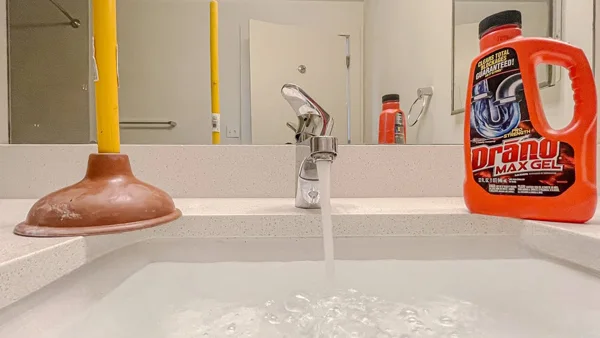
Once the hot water has done its work, use a plunger to try and dislodge anything that may be remaining in the drain. Be sure to use caution when plunging, as you don’t want to splash yourself with vomit.
If the plunger does not work, you may need to use a drain snake or other tool to remove the blockage. For this, you have to feed the drain snake into the drain until you feel resistance. Then, crank the handle of the snake to break up the blockage and clear the drain.
5. Use Vinegar and Baking Soda Mix:
You can also use a baking soda and vinegar mixture. Just pour 1/2 cup of baking soda into your drain, followed by 1/2 cup of vinegar. Allow the mixture to sit for 15 minutes before flushing with hot water again.
6. Use Plunger for the Final Cleanup:
Use a plunger to remove any final chunks of vomit from the drain. Give the drain a final flush with boiling water, and then run the shower for a few minutes to make sure everything is flowing freely before hopping in.

7. Disinfect the Shower:
After you’ve done all you can to remove the vomit from the drain, it’s time to disinfect it. You’ll want to use a household cleaner that contains bleach or vinegar for this step.
Just mix 1 part cleaner with ten parts water and pour it down the drain, making sure to coat all areas where there was vomit present. Allow the cleaner to sit for 10 minutes before rinsing it with hot water one last time.
Next, pour 1 cup of baking soda down the drain and leave it overnight. In the morning, flush with hot water again to remove any lingering odors.
Additional Tips and Advice:
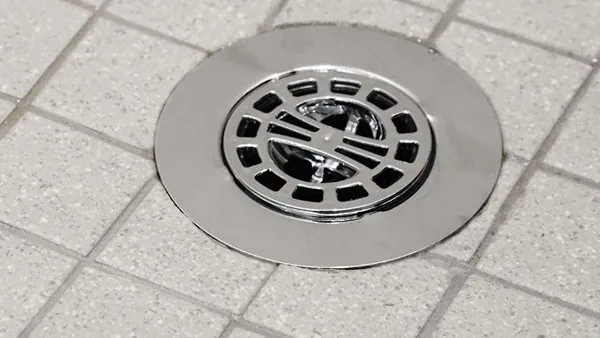
- Cover the drain with a mesh screen or grates to prevent future clogs.
- Clean the area around the drain with soapy water or a diluted bleach solution to disinfect.
- Wear rubber gloves to protect your hands from contact with the vomit.
- Open the windows to air out the shower room while you are cleaning.
- Avoid using bleach or other harsh chemicals on the drain, as they can wreck the finish and cause corrosion.
- Be sure to rinse the area well after cleaning to remove any residue.
- If the vomit is old or has been sitting in the drain for a while, it may be necessary to snake the drain before cleaning it. This will help to remove any blockages that may be causing the odor.
Can Vomit Clog a Shower Drain?
Vomit is made up of gastric secretions, including stomach acids, mucus, bile, and undigested food particles. When vomit enters a shower drain, it can quickly clog the drain due to the high concentrations of solid material.
The solid materials in the vomit will adhere to the sides of the drainpipe and catch on any waste that is already present. This can create a blockage that prevents water from flowing freely through the pipe.

Also, when you vomit, you are often contracting your abdominal muscles. This puts pressure on the stomach, forcing more vomit out than usual. Due to this, it is very easy to clog a shower drain with vomit.
Is it Better to Throw Up in the Toilet or Shower?
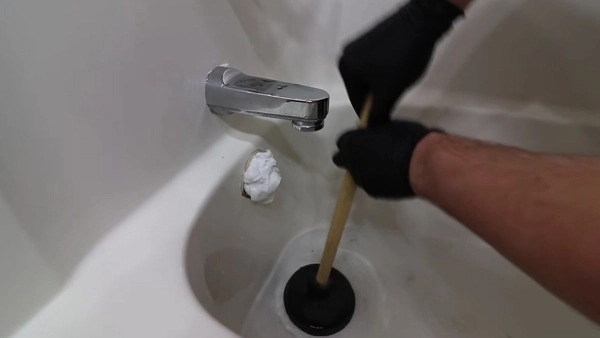
When it comes to vomiting, there is no one-size-fits-all answer. It depends on the individual situation. If you have access to a toilet and can make it there in time, vomiting into the toilet is generally the best option.
This minimizes the mess and makes cleanup relatively easy. In any case, if you are already in the shower or don’t have time to make it to the bathroom, vomiting into the shower may be your best bet.
The main thing is to try to keep yourself as clean as possible. After all, nobody wants to spend their day cleaning up a vomit mess. In general, it is preferable to throw up in the toilet than in the shower. In the end, the most important thing is to do what you can to minimize the mess.
How Long is Vomit Contagious on Shower Surfaces?
Vomit is generally considered contagious from the time the illness begins until at least 24 hours after the last episode of vomiting. This is because the stomach viruses that cause vomiting can be passed through contact with vomit and through contact with contaminated surfaces.
Due to this, it is important to clean up any vomit as soon as possible and to disinfect all surfaces that may have come into contact with it. Aside from that, it is important to wash your hands thoroughly after cleaning up vomit or coming into contact with a contaminated surface.
Will Vinegar Hurt PVC Pipes of Shower Drain?
Vinegar is a versatile household staple with a variety of uses, from cleaning surfaces to pickling vegetables. But can it be used on PVC pipes? The answer is yes, with caution. While vinegar is an acidic cleaner that can harm some types of pipes, it is safe to use on PVC.
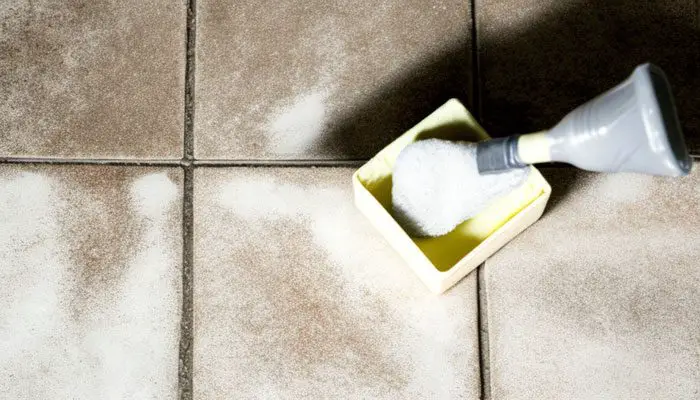
For best results, you should always dilute the vinegar with water before using it on PVC pipes, and avoid using full-strength vinegar if possible. Also, you should never use vinegar on exposed piping; it should only be used on piping that is covered by a drain trap or other type of protective barrier. If used properly, vinegar can be a safe and effective way to clean PVC pipes.
Is it safe to Use Baking Soda and Vinegar to Clean a Drain?

Baking soda is often used as a natural cleaning agent because it is non-toxic and gentle. Vinegar, on the other hand, is a weak acid that can break down grime and particles. On the downside, because vinegar is an acid, there is some concern that it could harm the pipes if used too frequently.
Baking soda (sodium bicarbonate) and vinegar (acetic acid) react chemically to produce carbon dioxide gas. When this happens quickly, it can cause an eruption that can splash corrosive material.
The reaction also produces salt (sodium chloride), which can accumulate in the drain and reduce its effectiveness. In small amounts, this is not a problem, but if a lot of baking soda and vinegar are used regularly, it can cause problems with the pipes.
Plus, both baking soda and vinegar can produce significant amounts of heat when mixed together, which could be dangerous if the mixture were to come into contact with the skin.
Overall, while both baking soda and vinegar are effective cleaning agents, it is important to use them carefully to avoid damaging drains or pipes.
Conclusion:
So, there you have it. The steps you need to follow in cleaning vomit out of your shower drain. Vomit can be a real pain to clean, but with a bit of effort and proper equipment, it doesn’t have to be a nightmare.
Always wear gloves and be as careful as possible when working with chemicals. If you do end up with a mess, don’t hesitate to call a professional. They’ll be able to help you out and get your drain looking good as new in no time. Thanks for reading.
A Similar Topic:
- Is it necessary to clean shower drain black sludge on a regular basis?
- How do you get rid of sand sediment in your bathtub drain?
- Is it possible to put Drano down a basement drain?

